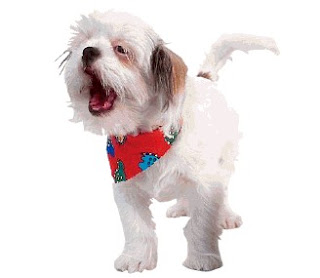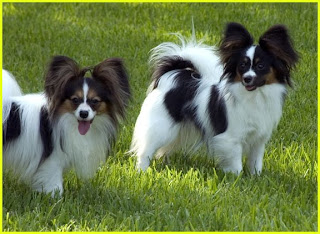
Why Dogs Bark
It is important to understand that dogs bark for various reasons. They do not bark just to annoy you and your neighbors, nor do they bark for spite or revenge. Dogs don't bark just because they can (though it might seem that way at times). Certain dog breeds bark more than others - some types of dogs were actually bred to be barkers. Then again, the Basenji does not bark at all (though the breed can vocalize in other ways). If you listen closely, you will eventually learn your dog's different barks. Understanding the reason why your dog barks is the first step towards controlling the behavior. In general, dogs will most commonly bark for the following reasons:
Warning/Alert: It is natural for a dog to bark when someone is a the door or when strangers pass the house or car. Many will bark if they sense some type of threat, proclaiming "I'm here protecting this place so don't mess with me." The sound of this bark is usually sharp, loud and authoritative. Honing this instinct with training can help protect your home and family.
Anxiety: Anxious barking often seems to be an an act of self-soothing for many dogs. It is often high-pitched and sometimes accompanied by whining. This type of barking is common for dogs with separation anxiety.
Playfulness/Excitement: This type of barking is especially common in puppies and young dogs. Many dogs will bark while playing with people or other dogs. Even the sound of the bark tends to sound upbeat and possibly musical. Some dogs will bark excitedly when they know they are about to go for a walk or car ride.
Attention-seeking: When you hear this bark, you will usually know just what it means. This bark says "Hey! Hey! Look! Here I am!" Other dogs may whine and bark together to get attention, almost like the tone of a whining child.
Boredom: The bark of a bored dog sounds like a dog that barks just to hear her own voice. Though it tends to be annoying, it is also kind of sad. Bored dogs often bark to release excess energy, and sometimes bark out of loneliness. They usually need an activity and perhaps even a companion.
The Safest Way To Stop Dogs Barking: Training
I am a part time dog trainer and i think the best way to get a dog to stop barking is to train it to bark! It seems silly but it is totally effective! if you train the dog to bark on command it will only do it when you ask it to. Alternatively you could figure out what causes the dog to bark e.g. the door bell therefore when the door bell rings train the dog to use it as a cue to do something else like go on its bed so when the door bell rings the dog will go onto its bed instead of barking! simple! :D
I hope people will understand the importance of using positive reinforcement rather than scolding or harming dogs!
Another (Safe) Alternative to Prevent Your Dog From Barking
A dog parent can also try safe ultrasonic bark control. When your dog barks the ultrasonic bark control unit emits a high frequency sound that only your dog can hear. Each dog bark triggers the bark control unit to emit the sound. The dog will stop barking when he/she hears it. Soon the dog will realize that their barking causes the uncomfortable noise and will stop barking. The ultrasonic bark control is not recommended in a house with cats since they are also able to hear the high frequency sound.
There are two types of Safe Ultrasonic Bark Controls: Indoor and Outdoor. The Indoor Bark Control unit sits on any flat surface in your house. The Outdoor Bark Control looks like a Birdhouse and can be placed on any outside tree. The device not only looks great for your outdoor decor but an added benefit is controls not only your dog from barking but also your neighbor's barking dog. The Indoor Bark Control unit can be controlled manually or automatically. Manually means you will press the button when you hear your dog bark. Automatic means the device will emit the sound when it picks up the dog bark.























